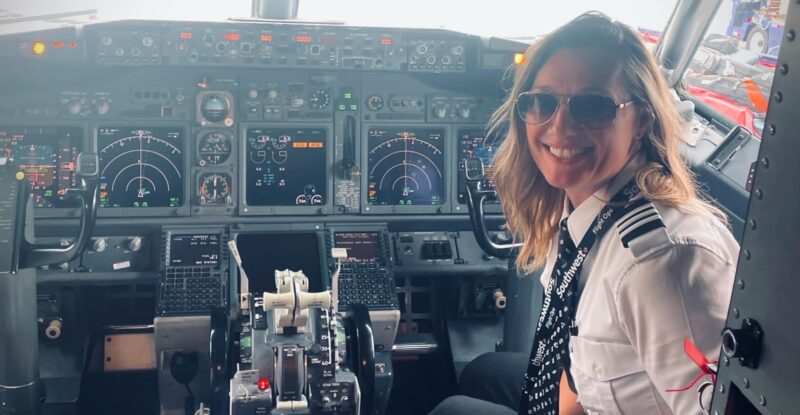 Fewer than 10 percent of licensed pilots in the United States are women, according to the US FAA. But why are the numbers so low? I reached out to my friend, commercial airline Pilot Sarina (SJ) Larson to gain a greater understanding of the challenges and rewards of a pilot career.
Fewer than 10 percent of licensed pilots in the United States are women, according to the US FAA. But why are the numbers so low? I reached out to my friend, commercial airline Pilot Sarina (SJ) Larson to gain a greater understanding of the challenges and rewards of a pilot career.
Larson took her first airplane ride at 15 with her dad’s flight instructor. “I’m not sure if my dad just wanted to impress me or if he loved the novelty of bringing his daughter with him, but I guarantee you he never expected me to fall in love with flying,” she told RGN.
“I immediately went to the local airport and asked for a job, and next thing I knew I was working at an FBO cleaning airplanes and handing over my $100 paycheck for a couple of $50 rides in a Cessna 152. I fell in love with the people. Aviation people are the absolute best.”
Even so, when it came time to choose a career after high school, she didn’t consider flying for the airlines. “I wanted to be a journalist or a physical therapist but the passion wasn’t there for any one thing and I wasn’t sure what to do,” Larson confided.
During her Junior year of college, she asked her flight instructor how much money he made. “He laughed and said, ‘Oh, I don’t make money doing this. I own Subway franchises. But you… you should go be an airline pilot.’
“And, I think I decided at that moment.”
Becoming a professional aviator is a costly endeavor. “Money was always an issue, but growing up on the high end of poverty, I learned resourcefulness. One of the first things they teach us in pilot training is to ‘use all available resources’. That was something I knew how to do,” said Larson.
“I used every single resource available and I worked hard and I persisted… and then I almost dropped out because I saw the loan amounts piling up, even with scholarships. But I worked two jobs and I kept seeking opportunities. I earned good grades and before I knew it, I had many people in my circle showing up for me. And things came together in the end.”
When she received her Certified Flight Instructor rating in 2005, the airlines were still furloughing. “And then came marriage and family planning. I was a newlywed and wondered when we would have kids. What does it look like to have kids in a dual pilot household? I didn’t have much time to think about it — I got pregnant almost as soon as those thoughts arrived,” she said, adding:
I remember an occasion when I, a fresh flight instructor of 23 years old, met a corporate pilot. I was visibly pregnant, and I was excited to talk to him about his experience, and before I could ask him anything, he proclaimed that I had wasted all my money and time getting my ratings, and that when I had this baby, I’d want to stay home forever and that I wouldn’t want to go back to flying.
“Trust me,” he said.
I still think about the impact that conversation had on me. Already terrified, I was more conflicted than ever. Do I go back immediately just to prove him and everyone else wrong? What if I don’t want to go back to work? It was a lot of pressure. Now, I look back and laugh. If I could go back… that man would get an earful!”
To the women and girls considering an airline pilot career, Larson’s recommendation is to “be persistent and resourceful — and persistently resourceful. We live in a time of immediate gratification, and flight training is not that! It’s a marathon. No, an ultramarathon.
“You’ll fail. You’ll struggle. You’ll think you weren’t meant for this. And when you finally get your CFI you’ll be on top of the world — and then airlines will stop hiring. I promise it’s temporary. Stay the course.”
Related Articles:
- Five lessons learned as a student pilot
- Mom, you should fly too: Stephanie Gehman on her pilot journey
- North Carolina students challenge the status quo for pilot careers
- Kincade’s Only Up documentary helps women soar in aviation
- Armless pilot inspires others to see ability instead of disability
- Record-setting American aviator Shaesta Waiz on ignoring the naysayers
Image courtesy of SJ Larson











